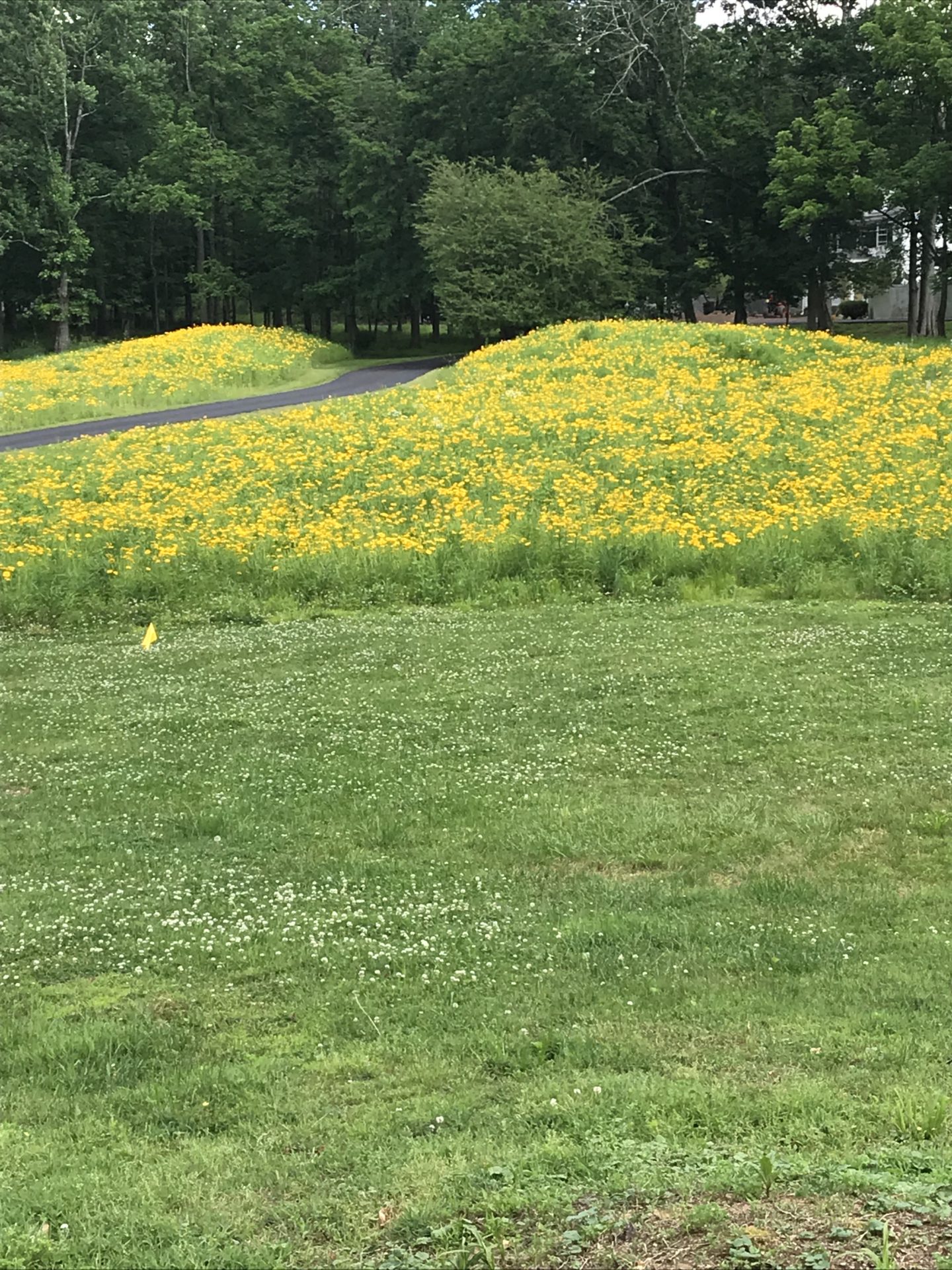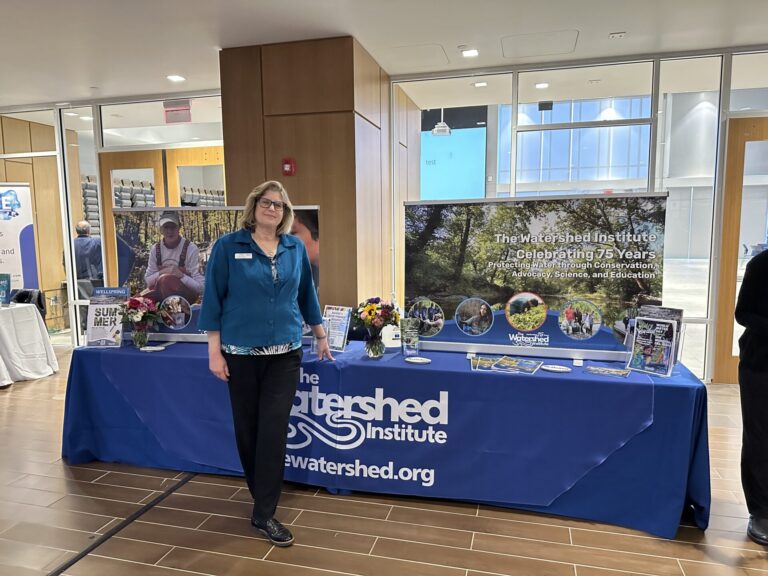Some solutions require a shovel.
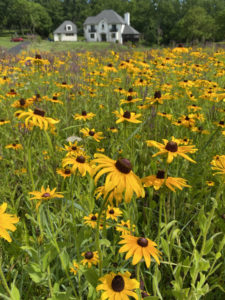 Britney O’Donnell, a local landscaper who has completed both the basic and advanced phases of the Watershed Institute Green Infrastructure (WIGI) training, said the coursework gave her a more informed perspective as she runs her 16-year-old garden design business.
Britney O’Donnell, a local landscaper who has completed both the basic and advanced phases of the Watershed Institute Green Infrastructure (WIGI) training, said the coursework gave her a more informed perspective as she runs her 16-year-old garden design business.
She said the certification helps her educate her clients better on how to manage flooding, soggy yards, and other ways of controlling excess water on their properties. She digs into her rain gardens, vegetated filters, and other landscaping features with shovels, backhoes, and additional tools.
Britney was one of a few dozen professionals who took the Watershed’s training, done in partnership with the Chesapeake Bay Landscape Professionals, to strengthen her knowledge of native plants, permeable hardscape, stormwater calculations, drainage, and more.
The green infrastructure allows buildings and yards to drink their own rainwater. The projects are designed so the rain has the time and the space to soak into the soil, and the plants cleanse the pollutants before the stormwater reaches streams, rivers, lakes, and other waterways. These landscape features also add biodiversity and natural beauty. With New Jersey’s new green infrastructure rule, she anticipates that her clients will be asking for more rain gardens, swales, and other landscaping options.
“By the time New Jersey requires more stormwater management, I feel like our team is going to have a lot of hands-on experience. Honestly, we couldn’t be at a better place,” she said. “We are getting to learn every day before it is required and we will really know what we’re doing with rain gardens and plant materials.”
 The Watershed-certified professionals have in-depth knowledge of the best practices for sustainable landscapes and a focus on the maintenance of these stormwater practices, and our next training begins in September. The Watershed Institute encourages consumers to ask for these WIGI-certified individuals when selecting a landscaping company.
The Watershed-certified professionals have in-depth knowledge of the best practices for sustainable landscapes and a focus on the maintenance of these stormwater practices, and our next training begins in September. The Watershed Institute encourages consumers to ask for these WIGI-certified individuals when selecting a landscaping company.
The Watershed certification shows an advanced level of professionalism and knowledge of sustainable landscaping practices to create healthier watersheds. Certification is voluntary and candidates who take the two-day course then must pass a comprehensive exam that assesses an individual’s command of these practices in the design, installation, and maintenance of landscapes.
“While taking this class, we were excited to have the use of native plants emphasized because we know they will grow well in our native soil,” she said. “Calculating stormwater runoff was a helpful tool and informs us with deciding exactly what size rain garden to install.”
She said the WIGI credentialing is important because her Stockton-based company will be on a list in Princeton Township. “They will refer us out for rain gardens and stormwater management,” she said.
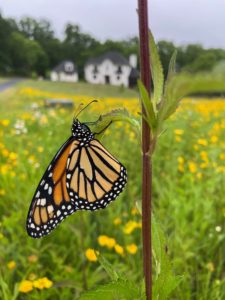 The most valuable aspect of the training “was learning how to properly redirect water so you’re not just running water into areas where it will go into a natural body of water. Instead, we want to keep the water so it is absorbed on the property and can recharge the aquifer.”
The most valuable aspect of the training “was learning how to properly redirect water so you’re not just running water into areas where it will go into a natural body of water. Instead, we want to keep the water so it is absorbed on the property and can recharge the aquifer.”
She’s done work in the private residences of longtime Watershed supporters, Meg and Tom Gorrie, as well as Scott Sillars, the current chair of the Board of Trustees, and the incoming chair, Barbara Cole.
“Our gardens are extensive and Britney and her crew help me to keep them in order,” Meg said. “The back portion of our property is a hill that borders on Honey Lake. Prior to my meeting Britney, Hurricane Sandy uprooted six huge oak trees that destabilized the hill. Another friend, who is a landscape architect, constructed boulder rimmed beds to solve the problem. They are beautiful, however, we went from having a rustic wooded hillside with paths to a park! We love it, but it is a lot of work and I truly could not manage it all without Britney and her crew. Britney gives of herself and has volunteered at the Watershed on several occasions with the Butterfly House and other projects.”
Scott said, “Britney converted our front yard into a large rain garden. It is a high visibility location with heavy stormwater surges. The installation was done in October; the next May it was well established and sparking many inquiries.”
The Kate Gorrie Butterfly House also has received Britney’s talents. She laid out the beds, set out the steel edging along the path, and installed the small pond.
“The butterflies like to drink water from underneath the stones so it is a really interesting design – it is really cool – to essentially make a water dish for the butterflies,” she said. “I’m living the dream every day.”
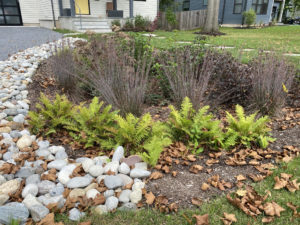 She said her projects have homeowners, restaurants, business owners, and others in mind with an eye toward selecting easy-care designs and low-maintenance plants.
She said her projects have homeowners, restaurants, business owners, and others in mind with an eye toward selecting easy-care designs and low-maintenance plants.
“I did this training thinking about the future. I hope to be doing more and more stormwater management for homeowners, towns and commercial enterprises. I really enjoy working and being able to be creative every day. This is a different way to be creative with the rain gardens. I’m good at picking low-maintenance plant matter. I want my gardens to be beautiful and I can’t be out there every day.”
Added Erin Ingwerson, who works with Britney’s landscaping firm, “I look at everything differently now. Before these courses, my job as a designer was all about visual aesthetics, basic land use, and function. What colors and textures mix well together and provide yea round interest, does this area need a walkway? Will a mower fit through this section? But since these courses, it’s like my eyes have been opened up – the function of a landscape doesn’t stop at mower width or the height of a sitting wall! It goes so much deeper. It’s not that these elements are now secondary, but they are on par with the environmental function a landscape can and should serve. Now, when I see a wet spot in a yard or a downspout emptying out to a storm drain, I think to myself, ‘how can I fix that with native plants?’ Every yard has these problems and every landscape professional has an opportunity to correct them.
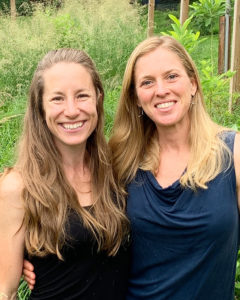
“I feel so lucky to have a boss who encourages me to learn and grow the way Britney does, and my job has become so much more fulfilling by taking on these new challenges and doing this important work. I have a new goal as a landscape designer: To teach people that sustainability is beautiful. When we design for both aesthetics and sustainability, everyone wins you, your community, our environment- and that is beautiful!”

